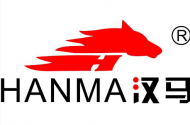Among clothing fabrics, we often hear the term woolen fabric, which is widely used in various clothing productions. But in fact, many friends still don’t understand what woolen fabrics are. The following is to popularize the little knowledge related to woolen fabrics so that everyone has a simple understanding of woolen fabrics.
What is woolen and worsted spinning?
Woolen cashmere and worsted cashmere, in simple terms, are two kinds of yarns with different thicknesses in appearance due to different technological processes in the process of spinning raw cashmere into yarn.
In the spinning process, there is a process called combing. The yarn produced by this process is called combed yarn, but the yarn produced by this process is called carded yarn or roving yarn. The combed yarn is strong and even It is superior to carded yarn in all aspects.
What is the difference between woolen and worsted weaving?
The woolen fabric has a plump surface and a dense and thick texture. There are fine piles on the surface, and the texture is generally not revealed. It feels warm, plump, and flexible. The yarn is mostly thick single yarn.
the worsted fabric surface is smooth and clean, the texture is fine and clear. The luster is soft and natural, and the color is pure. It feels soft and flexible. Squeeze the dough with your hands to loosen it, the crease is not obvious, and it can quickly return to its original shape. Most yarn counts are double strands.
Analysis of worsted spinning, semi-worsted spinning and woolen spinning
The biggest difference between semi-worsted spinning and traditional wool spinning and wool spinning technology is that it integrates cotton spinning technology and wool spinning technology to form a new type of multi-component mixing technology. Carding machines, draw frames, roving frames, and spinning frames for cotton spinning; the latter is the winding, doubling and two-for-one twisting equipment for worsted spinning. The change of equipment and technology solved the problems that the original wool spinning equipment could not solve.
Semi-worsted spinning can realize the successful blending of natural raw materials such as cotton, wool, silk, hemp and other new man-made fibers and chemical fibers. The raw materials of wool spinning and semi-worsted spinning cover natural fibers such as cashmere, wool, spun silk, rabbit hair, cotton, ramie, soy protein fiber, milk protein fiber, tencel, modal, bamboo fiber, viscose fiber and other man-made fibers. The successful blending of acrylic, polyester, nylon and other chemical fibers has an extremely rich product structure.
Woollen spinning is a spinning method of wool spinning. The spun cashmere is of relatively thick count, and the price is low. The wool yarn has poor properties and is easy to pilling and deform. The count of semi-worsted spinning is roughly 28/2. Compared with woollen spinning, the price is higher and the properties are better. Worsted cashmere is the best, the count is above 2/48, and the products made are soft and delicate. Very comfortable to wear and keep warm. But this kind of yarn is very expensive, commonly known as “soft gold in wool yarn”. About 1800 yuan/kg or more.
There are two types of cashmere high-count yarn production lines that have appeared in China, semi-worsted spinning and full-worsted spinning. Semi-worsted spinning can be spun below 16.67tex without combing to remove short fibers, which can meet the needs of general light and thin fabrics, and the yarn formation rate is relatively high and the cost is relatively low. Worsted spinning needs to be combed to remove short fibers. The spinning count can reach 10tex, but the cost is relatively high, and due to yarn strength, it often needs to be blended with other fibers, which is suitable for special light and thin fabrics. Therefore, the development and production of semi-worsted cashmere yarn, after woollen cashmere yarn, is increasingly being valued by domestic and foreign cashmere yarn markets.
The difference between woolen wool and worsted wool
Identification of woollen wool:
1) Sensory recognition. All pure wool products are generally thick and smooth in suede, uniform and slightly shiny, warm to the touch, no wrinkles after folding, and the wool body is soft and resilient.
2) Combustion recognition. When the single yarn is drawn and burned with fire, it will gradually smoke, and it will smell like burning hair, and the gray is black and brittle.
3) Item number identification. Every piece of wool sold has a label, and the product number on the label is a five-digit number. If the first digit is 0, it means pure wool, and if the first digit is 1, it means blended products. For example: 01001-pure wool Melton; 11001-blended Melton; 71001-purified fiber Melton.
Identification of worsted wool:
Worsted wool is mainly pure sheep wool, and can also be mixed with a certain proportion of wool-type chemical fibers or other natural fibers. It is processed by combing equipment and through multiple carding, merging, drafting, spinning, weaving, High-end garment fabric made by dyeing and finishing. It has good elasticity, softness, unique milling and wrinkle resistance that are unique to animal hair. It also has warmth retention after absorbing moisture or sweat.
The difference between woollen wool and worsted wool:
worsted fabric surface is smooth and clean, the texture is fine and clear. The luster is soft and natural, and the color is pure. It feels soft and flexible. Squeeze the dough with your hands to loosen it, the crease is not obvious, and it can quickly return to its original shape. Most yarn counts are double strands.
The woolen woolen cloth has a plump surface and a dense and thick texture. There are fine piles on the surface, and the texture is generally not revealed. It feels warm, plump and flexible. The yarn is mostly thick single yarn.





